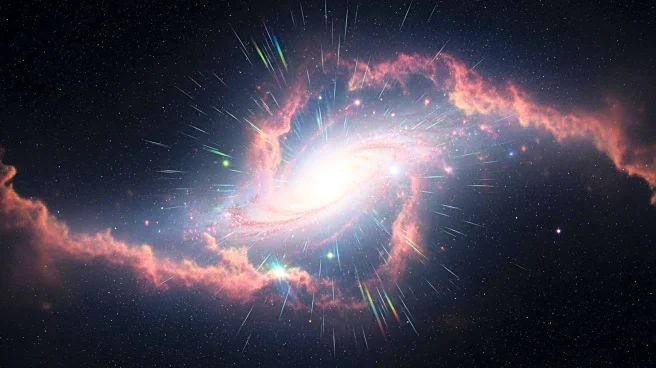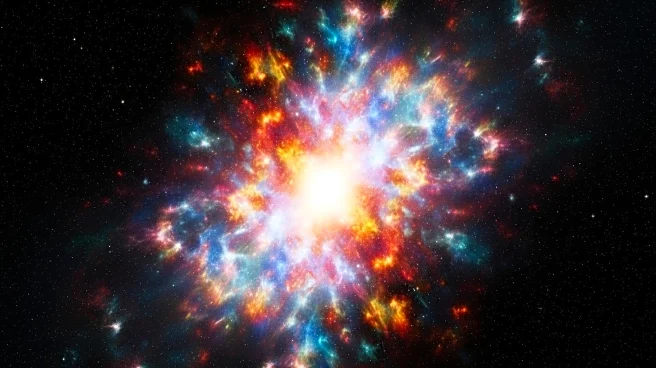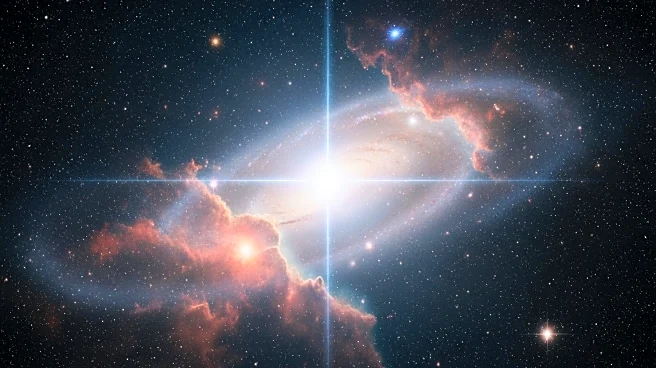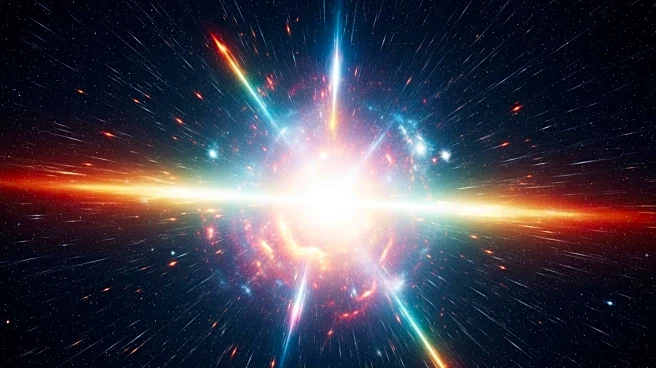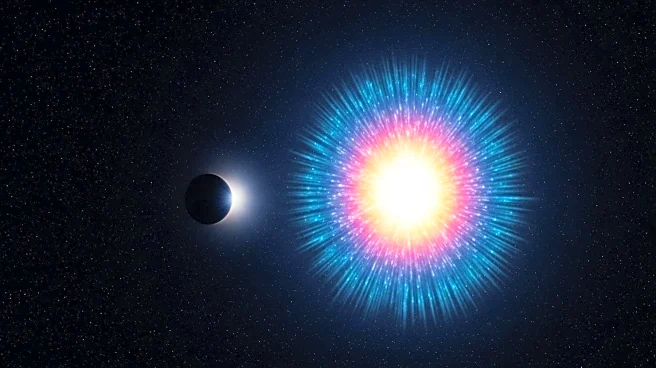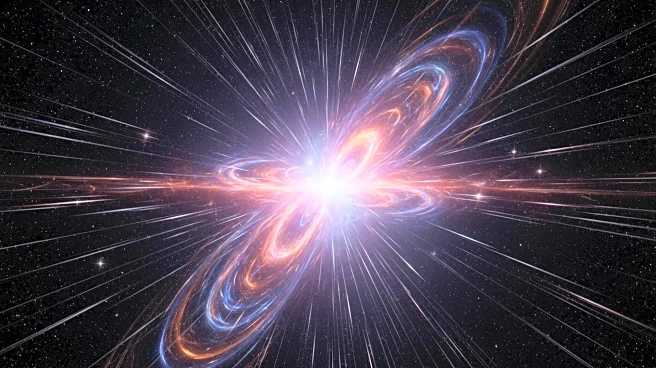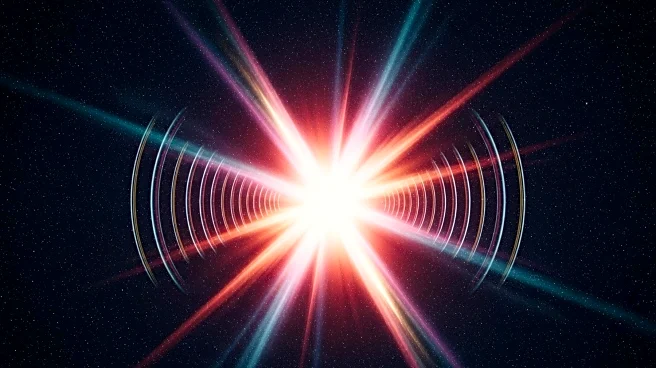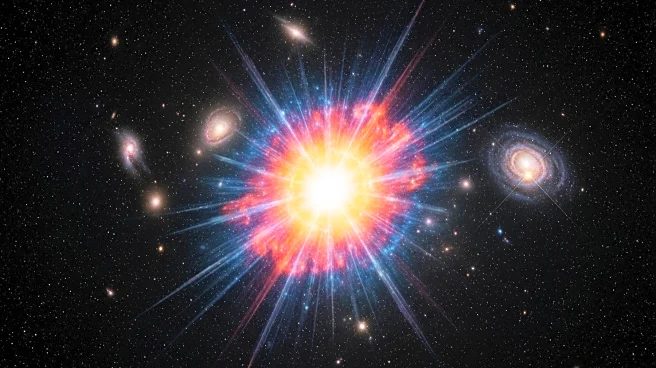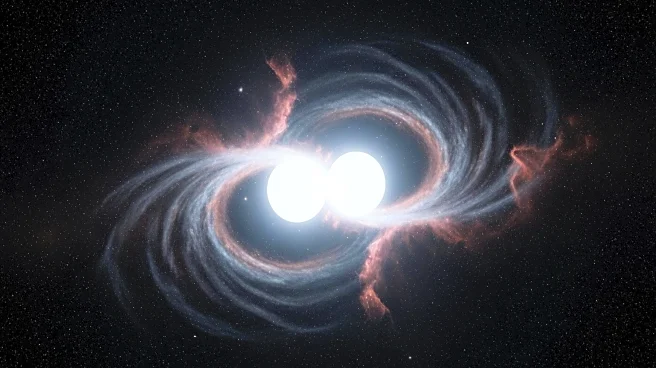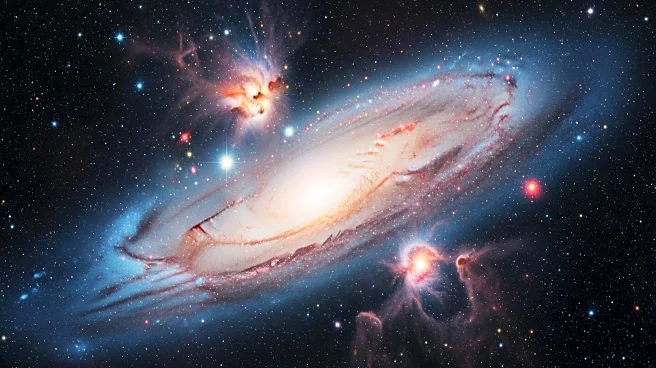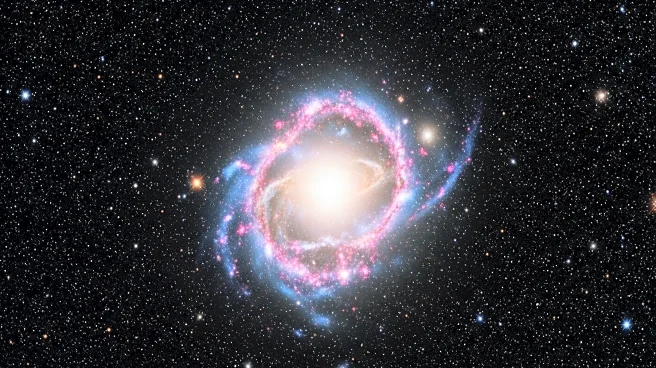What is the story about?
What's Happening?
Astronomers have detected a gamma-ray burst (GRB) that defies conventional explanations due to its repeating nature. Designated GRB 250702B, this burst was observed by NASA's Fermi Gamma-ray Space Telescope and the Einstein Probe, showing three distinct bursts over a single day. Typically, GRBs are catastrophic events that occur once, as they result from the complete destruction of a star. The signal's periodic nature and extragalactic origin, confirmed by the Very Large Telescope, suggest a powerful cosmic event. The burst's energy and periodicity challenge existing models of GRBs, prompting scientists to explore new theories.
Why It's Important?
The discovery of GRB 250702B is crucial as it challenges the established understanding of gamma-ray bursts, which are typically singular events. This anomaly could lead to new insights into cosmic phenomena and the mechanisms behind GRBs. The event's extragalactic nature indicates a powerful source, potentially involving intermediate-mass black holes or other exotic cosmic interactions. Understanding these bursts can advance knowledge in astrophysics and cosmology, impacting theories about star death, black holes, and galaxy formation.
What's Next?
Researchers are exploring various theories to explain GRB 250702B, including tidal disruption events involving black holes. Continued observations and studies aim to refine the understanding of the burst's origin and characteristics. Spectroscopy and further monitoring will help determine the distance and environment of the source, potentially revealing more about the conditions that led to this unusual event. The findings could lead to advancements in observational techniques and technologies used in astrophysics.
Beyond the Headlines
The detection of GRB 250702B may prompt a reevaluation of existing models of gamma-ray bursts and their origins. It raises questions about the nature of black holes and their interactions with surrounding matter. The event's extragalactic nature suggests powerful cosmic processes that could inform theories about galaxy formation and evolution. This research could also lead to advancements in observational techniques and technologies used in astrophysics.
AI Generated Content
Do you find this article useful?
